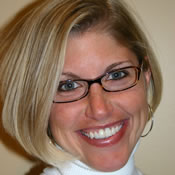|
Think you're too old to exercise? Orville Rogers will singlehandedly turn that excuse on its head. As he approaches his 99th birthday next month, Rogers is a proud holder of several world records in track events, and is poised to break more as he continues running into his next century. Rogers became a runner relatively late in life. He was in his 50s when he picked up a copy of Kenneth Cooper's "Aerobics." First published in 1968, the best-selling book touted aerobic exercise—particularly jogging and swimming—as the most effective way to condition the body and ward off illness. Until then, Rogers' physical activity had been limited to occasional games of handball or racquetball, but the day after finishing the book, he laced up his sneakers and set off for his first slow mile. He's never looked back. Over the next four decades, Rogers completed countless races, including five marathons, and has more than 42,000 miles under his belt. When he turned 90, he started noticing the records set in running competitions for his age group and realized he could beat them, so he started competing. Rogers currently holds the world record for the 800-meter, the mile and the 3,000-meter, and the national record for the 200-meter and the 60-meter. Most recently, in March of 2016 at the USA Masters Indoor Track & Field Championships in Albuquerque, New Mexico, Rogers won all five of the events he competed in, and also set a new world record for the 1,500-meter distance. Today, Rogers' regular routine is to run three times a week, along with two to three 45-minute strength training sessions. He doesn't do much on his days off, allowing his body to recover for the next session. Nutrition also plays a key role in his success. "On a typical day, I eat a lot veggies and fruit, and more chicken and fish than beef or pork," he says. "I eat a substantial breakfast, a light lunch and a light dinner." Orville's 3 Tips for Injury-Free Running
Although Rogers credits his running for helping to extend his longevity, he's more motivated by how it has enhanced his quality of life. "Every scientific study shows that if you exercise, you live longer, but that’s the icing on the cake," he says. "Your health is the incentive. The enjoyment comes after that.” Orville has recently completed a memoir, "The Running Man," which will be published by Clovercroft Publishing on February 1, 2017. |
Popular EntriesMore From SparkPeople
|




















.jpg)